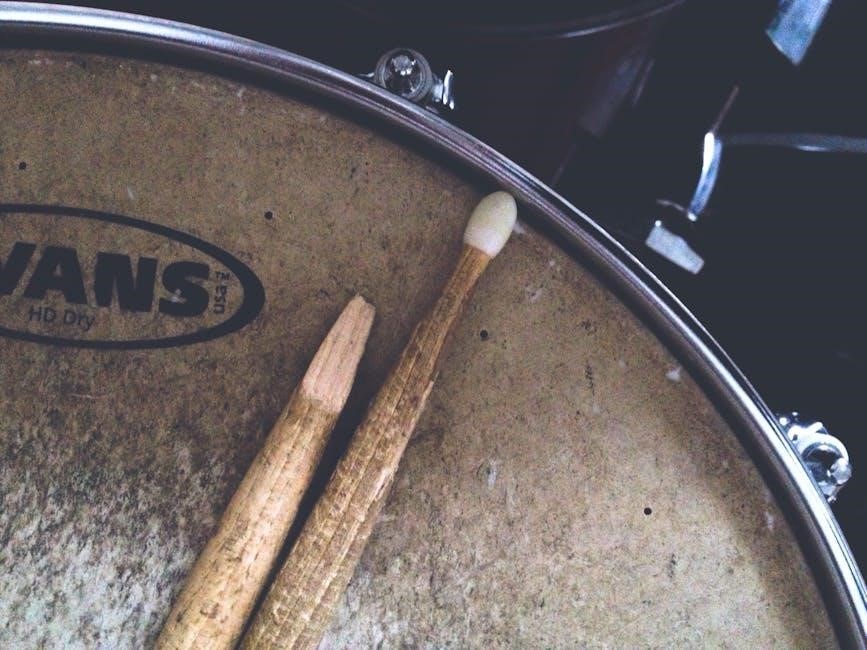IT band syndrome is a common overuse injury causing pain on the outer knee, especially in runners and cyclists. It occurs when the iliotibial band becomes inflamed from rubbing against the knee or hip, leading to discomfort during physical activities.
What is IT Band Syndrome?
IT band syndrome is a medical condition causing pain on the outside of the knee due to inflammation of the iliotibial band. It occurs when the band rubs against the hip or knee bones, leading to irritation and swelling. Common symptoms include sharp or aching pain, stiffness, and burning sensations, especially during activities like running or cycling. It is often referred to as an overuse injury, primarily affecting athletes and individuals engaged in repetitive knee-bending activities. The condition is treatable with rest, stretching, and physical therapy.

Common Causes and Risk Factors
IT band syndrome is primarily caused by repetitive friction between the iliotibial band and the hip or knee bones, leading to inflammation. Overuse injuries from activities like running, cycling, or repetitive knee bending are common triggers. Risk factors include poor biomechanics, muscle imbalances, and weak hip or core muscles. Athletes, especially runners and cyclists, are more prone to this condition. Additionally, sudden increases in activity intensity or duration can exacerbate symptoms. Faulty running mechanics and tight or weak surrounding muscles also contribute to the development of IT band syndrome.
Key Symptoms and Diagnosis
IT band syndrome typically presents with pain on the outer side of the knee, often worsening during activities like running, cycling, or descending stairs. Stiffness, aching, and burning sensations are common complaints. Pain may intensify at specific angles of knee flexion, such as 30 degrees. Swelling is usually minimal, but tenderness along the IT band is noticeable. Diagnosis involves physical examination, patient history, and sometimes imaging like X-rays or MRIs to rule out other knee issues. The Ober test may also be used to assess IT band tightness or inflammation.
Understanding the Iliotibial Band
The iliotibial (IT) band is a strong, fibrous tendon that runs down the outer thigh from the hip to the knee. It stabilizes and supports leg movement.
Anatomy of the IT Band
The iliotibial (IT) band is a thick, fibrous tendon that runs along the outer thigh, originating from the ilium (hipbone) and tensor fasciae latae muscle. It extends down the thigh, passing over the hip and knee joints, and inserts into the tibia (shinbone) just below the knee. This band plays a crucial role in stabilizing the knee and assisting in movements like walking, running, and cycling. Its anatomical structure allows it to absorb and distribute forces during physical activity, making it essential for athletic performance and daily mobility.
How the IT Band Functions
The IT band functions as a stabilizer during leg movements, particularly in activities like walking, running, and cycling. It helps control flexion and extension of the knee and hip, absorbing forces to reduce strain on the joint. During movement, the IT band glides over the femur and tibia, providing lateral stability to the knee. However, repetitive friction from activities like running can cause irritation and inflammation, leading to IT band syndrome. Understanding its role in movement is key to preventing and managing this common overuse injury.
Prevention and Treatment
Prevention and treatment of IT band syndrome involve a combination of rest, activity modification, physical therapy, stretching exercises, and ice therapy to reduce inflammation and alleviate pain.
Rest and Activity Modification
Rest and activity modification are crucial in managing IT band syndrome. Avoiding activities that aggravate the condition, such as running or cycling, can help reduce inflammation. Incorporating low-impact exercises like swimming or yoga can maintain fitness without overloading the knee. It’s essential to allow the iliotibial band time to heal, as continued strain may worsen symptoms. Gradually returning to activities after rest can prevent recurrence. Proper activity modification ensures the IT band has time to recover, promoting long-term relief and preventing further irritation.
Physical Therapy and Stretching
Physical therapy plays a key role in treating IT band syndrome, focusing on reducing inflammation and improving flexibility. A therapist can design a program tailored to your needs, incorporating stretches to alleviate tension in the iliotibial band. Techniques such as standing IT band stretches and side-lying stretches are commonly recommended to target the affected area. Strengthening exercises for the surrounding muscles, like the glutes and core, are also essential to restore proper biomechanics. Regular stretching and therapy can help prevent recurrence and promote a full recovery.

Effective IT Band Stretches
Effective IT band stretches include standing stretches, side-lying stretches, and foam rolling techniques to relieve tension and improve flexibility in the iliotibial band.
Standing IT Band Stretch
The standing IT band stretch targets the outer thigh and hip area. Stand with your feet shoulder-width apart, cross the unaffected leg behind the affected one, and lean toward the unaffected side until a stretch is felt. Hold for 30 seconds, then switch sides. Keep your back straight and avoid arching. This stretch is gentle yet effective for relieving IT band tension and can be done before or after physical activity to improve flexibility and reduce discomfort.
Side Lying IT Band Stretch
Lie on your side with your affected leg on top. Bend your knee and pull your heel toward your buttocks until a stretch is felt on the outer thigh. Keep your back straight and hips aligned. Hold for 30 seconds, then release. Repeat 2-3 times. This stretch targets the IT band, helping to reduce tension and improve flexibility. It’s an effective option for those who prefer lying down or need a gentle stretch to relieve outer knee discomfort caused by IT band syndrome.
Foam Rolling Techniques
Foam Rolling Techniques
Foam rolling is an effective way to relieve IT band tension. Lie on your side with the affected leg up, placing the foam roller under the outer thigh. Slowly roll from the hip to the knee, using smooth, controlled movements. Focus on areas of tightness or discomfort. Repeat for 2-3 minutes, breathing deeply to relax the muscle. This technique helps reduce inflammation, improve circulation, and break up adhesions in the IT band, providing long-lasting relief from pain and stiffness associated with IT band syndrome.

Strengthening Exercises for Recovery
Strengthening exercises target the glutes, hips, and core to improve stability and reduce IT band tension. Focus on exercises like clamshells, side-lying leg lifts, and glute bridges to enhance strength and promote recovery, helping to alleviate symptoms of IT band syndrome effectively.
Glute Strengthening Exercises
Glute strengthening exercises are crucial for recovery, as weak glutes can contribute to IT band syndrome. Exercises like side-lying leg lifts, clamshells, and glute bridges target the gluteus medius, improving hip stability and reducing IT band irritation. Strengthening the glutes helps maintain proper hip and knee alignment during movement, preventing overuse and friction on the IT band. Incorporating these exercises into your routine can significantly reduce symptoms and promote long-term recovery. Focus on controlled movements and gradually increase intensity to build strength effectively.
Core Strengthening Exercises
Core strengthening exercises are essential for stabilizing the body and improving posture, which can help reduce IT band irritation. Weak core muscles often contribute to poor alignment and movement patterns. Exercises like planks, bird dogs, and side planks target the abdominals and lower back, enhancing overall stability. Strengthening the core helps maintain proper hip and knee alignment during activities, reducing the risk of IT band friction. Incorporating these exercises into your routine can improve balance, posture, and athletic performance, aiding in recovery and prevention of IT band syndrome.

Recovery and Return to Activity
Recovery involves gradual reintroduction of activities, ensuring proper healing to prevent recurrence. Rest, activity modification, and progressive exercise help restore strength and mobility safely.

Gradual Return to Exercise
A gradual return to exercise is crucial to avoid re-injury. Start with low-impact activities like swimming or cycling, ensuring no pain during or after. Progress slowly, incorporating strength and flexibility exercises. Avoid sudden increases in intensity or duration. Monitor symptoms closely, as pain may signal overexertion. A structured rehabilitation plan, including stretching and strengthening, helps restore function. Patience is key, as rushing back can prolong recovery. Always consult a healthcare professional to tailor the return-to-activity plan to individual needs and prevent relapse.
Ice and Compression Therapy
Ice and compression therapy is effective for managing IT band syndrome symptoms. Applying ice reduces inflammation and numbs pain, while compression minimizes swelling. Use an ice pack wrapped in a cloth for 15–20 minutes, several times daily. Compression bandages or sleeves provide consistent pressure, aiding in recovery. Elevating the affected leg further enhances blood flow. These methods alleviate discomfort and promote healing, especially in the initial stages. Combine with rest to optimize recovery and prevent further irritation of the IT band.

Creating a Personalized Stretching Plan
A personalized stretching plan tailors exercises to your needs, focusing on IT band flexibility. Incorporate stretches 2-3 times daily, holding each for 20-30 seconds to improve flexibility and reduce pain.
How to Structure Your Stretching Routine
A well-structured stretching routine for IT band syndrome should begin with a warm-up to increase blood flow. Incorporate standing IT band stretches and side-lying stretches, holding each for 20-30 seconds. Perform these 2-3 times daily, focusing on gentle, controlled movements. Include foam rolling to release tension in the IT band. End with a cool-down to relax muscles. Balance stretching with strengthening exercises for the core and glutes to support recovery. Adjust the routine based on pain levels and progress, ensuring consistent practice for optimal results.
Tracking Progress and Adjustments
Tracking progress is essential for managing IT band syndrome. Keep a log of your stretching routine, noting pain levels and improvements in flexibility. Monitor how your symptoms change with consistent practice. Adjust your routine based on progress, increasing stretch duration or incorporating new exercises as needed. If pain persists, consult a physical therapist to refine your approach. Regularly assess your range of motion and strength to ensure a balanced recovery. Adjustments should aim to enhance comfort and functionality while preventing relapse.
Managing IT band syndrome requires consistent stretching, strengthening, and proper activity modification. With dedication and the right approach, individuals can effectively alleviate symptoms and prevent future issues.
Final Tips for Managing IT Band Syndrome
To effectively manage IT band syndrome, prioritize consistent stretching and strengthening exercises, especially targeting the glutes and core. Gradually return to activities, avoiding overexertion, and incorporate foam rolling to reduce tension. Maintain proper posture and biomechanics during workouts, and consider consulting a physical therapist for personalized guidance. Regularly monitor training volume and footwear to prevent recurrence. By combining these strategies with patience and dedication, individuals can alleviate symptoms and maintain long-term mobility and comfort.
Resources for Further Reading
For comprehensive guidance on managing IT band syndrome, explore reputable sources like hopkinsmedicine.org and runnersworld.com. These platforms offer detailed PDF guides on stretches, exercises, and recovery strategies. Additionally, consult sports medicine journals or physical therapy websites for expert advice. Look for resources that include diagrams of IT band stretches and strengthening routines. These materials will provide a well-rounded approach to understanding and addressing the condition effectively, ensuring you have all the tools needed for recovery and prevention.
